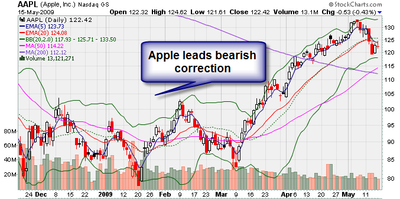Archived Blog
Posted May 22, 2009 at 4:11 AM
If you are a new reader, I strongly encourage you to listen to some recent postings where we projected in early May that the market would like encounter resistance by mid-May. In fact, we gave a 10-day horizon whereby we cautioned that trading bullish positions was not a high probability play. In short, the potential for reward was overshadowed by the risk of taking a long position.
At these times, only the greatest market timers should be playing aggressive positions. For most, prudence dictates taking a ‘wait-and-see’ approach. Nothing is lost by watching the market test a substantial resistance level to see if it is broken. Nothing is lost if the market fails at that resistance level. And nothing is lost even if resistance is broken and the market moves higher, other than an opportunity cost. Certainly, money could have been made. But the great traders don’t look merely at whether the markets could rise higher and whether they could make money on such a move.
Possibilities are for amateurs. If you want to join the elite ranks, you need to focus on probabilities too. If the probability of a move higher is low, entering a long position can be classified as either aggressive or just plain silly! In a recent video post, Gareth Feighery evaluated the probable outcomes for the market as May expiration approached. The most unlikely movement in the market, he stated, ahead of expiration was an aggressive move higher. (For more on the definitions of aggressive move higher, please click here). So, recognizing an out-of-the-money bear call could profit if the market stayed flat, rose slightly, or dropped, he favored a bear call on bellwether, Apple. And the analysis was spot on. From the moment the trade was placed, Apple started to pull back. Of course, such perfect timing requires a degree of fortune. But the analysis itself was no accident.
But that was the past. The pertinent question now is where are the markets headed? And for that we must move to the charts of the indexes.


